This 8-day cruise through the northern and southern islands of the Galapagos is an extraordinary journey offering a close look at the region’s unique ecosystems. With visits to islands like Española, Genovesa, and Floreana, travelers will encounter a vast array of wildlife, including giant tortoises, blue-footed boobies, and playful sea lions. Each day brings new opportunities for snorkeling, hiking, and exploring the volcanic landscapes and pristine beaches of the Galapagos.
- Best flamingo lagoon, unique beaches, and diverse shorebirds.
- Breeding and care of giant tortoises in captivity, promoting conservation and tourism.
- Birdwatching with various species, including red-footed boobies, masked boobies, and more.
- Enjoy snorkeling with sea turtles, sea lions, and vibrant underwater wildlife.
- Spot blue-footed boobies, albatrosses, and Nazca boobies, witness the magnificent blowhole.
- Stunning landscapes, volcanic cones, lava fields, and Galapagos penguins.
- Airport assistance (Quito or Guayaquil, if flights are booked through LT)
- Transfers in Galapagos
- Accommodation on board in double cabin
- All meals during the cruise
- Naturalist Bilingual Guide level III
- All visits and excursions according to the itinerary
- Snorkel Gear(mask, tube and fins)
- Kayaks
- Unlimited purified water, coffee and tea
- Round trip flight to/from Galapagos
- Galapagos National Park Entrance fee USD 200 p/p
Galapagos Ingala card USD 20 p/p
- Tips
- Local Taxes
- Travel Insurance
- Meals and services not mentioned above
- Alcoholic drinks and soft drinks
- Extras and personal expenses
Itinerary
Day 1 (Thursday) : Bartolome Island
AM: Flight to Galapagos
On this day, you will fly to the Galapagos Island. Due to the Galapagos Government, a fee of 20 USD must be paid for the migration control card.
Once in Santa Cruz, passengers must go through an airport inspection point to ensure that no foreign plants or animals are being introduced to the archipelago. Also, this inspection point is where passengers have to pay for the entrance to the Galapagos National Park under the following parameters:
As of September 2024, Foreign Passengers $200 and Children $100 (under 12 years old).
Later on, your guide will pick you up and will carry your luggage to the bus. Passengers will arrive at the Catamaran Seaman Journey on a motorized boat called Panga.
PM: Bartolome Island

© Latin Trails
Bartolome Island is situated across Sullivan Bay. It has an altitude of 114 meters, from where we can observe one of the most beautiful sceneries of the Galapagos Islands such as Volcanic cones, lunar-like craters, lava fields, and the famous Toba-formed pinnacle eroded by the sea. There is very little vegetation on this island.
It has two breathtaking beaches where marine turtles exist and at the base of the pinnacle, a tiny colony of Galapagos penguins.
Day 2 (Friday) : Mosquera Islet & North Seymour Island
AM: Mosquera Islet
Located between North Seymour and Baltra, Mosquera Islet is one of the smallest islands in the Galápagos. It is of volcanic origin, formed by geological uplift, has no visible crater, and its terrain is very flat.
One of the most striking features of Mosquera is the contrast of colors. A beautiful beach of white sand, transparent turquoise waters, lush green vegetation, and jet-black lava rocks. Landscape photography is highly recommended here, especially in the golden light conditions of early morning or at sunset.
PM: North Seymour
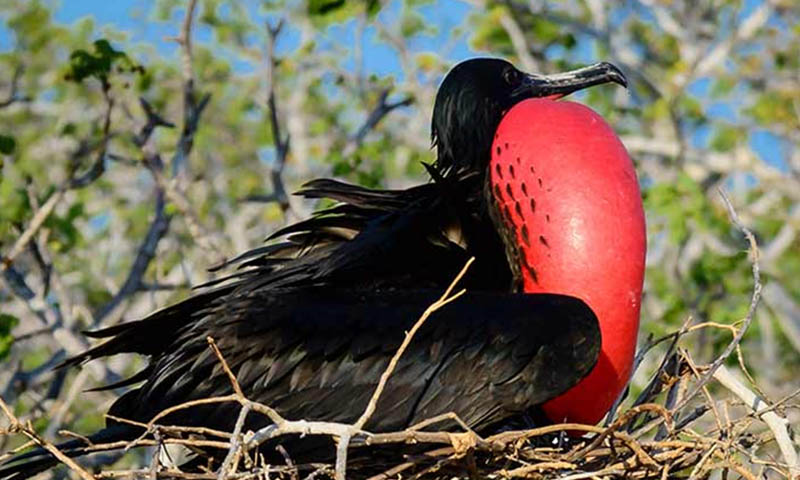
North Seymour is a raised island (rather than volcanic). Therefore, it is generally flat and filled with rocks. There are good nesting sites here for a large population of magnificent frigatebirds. Blue-footed boobies perform their courtship dance in the more open areas, and swallow-tailed gulls perch on the cliff edges.
Despite the tremendous surf that can pound the outer shore, sea lions haul out onto the beach and can be found body-surfing.
Day 3 (Saturday) : Genovesa Island: El Barranco & Darwin Bay
AM: Genovesa, Island El Barranco – The Cliff
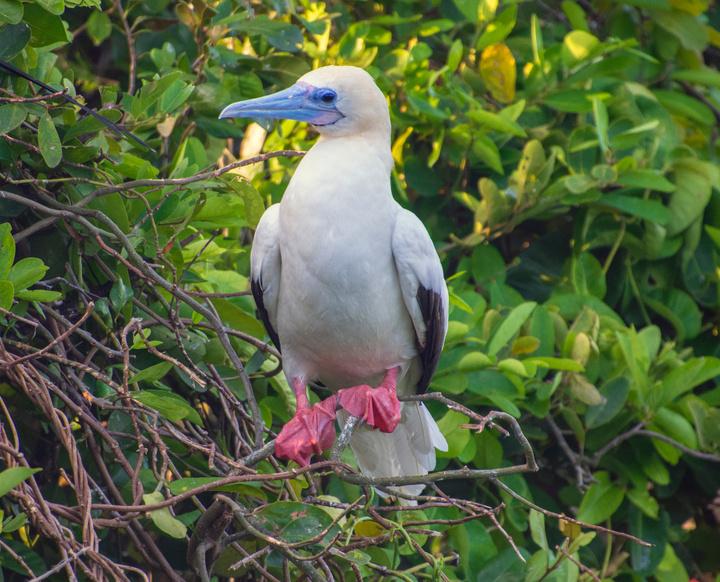
Photo: CampPhoto
The visitor site of El Barranco is located in the southern part of Darwin Bay on Genovesa Island. The trail is on volcanic rock, consists of 1.5 km, and can be done in about 2 hours. The youngest area of the island, from a geological point of view, lies in this area.
The cliff is located in the south and is composed of very fragile lava. The natural erosion in these lava flows has become the ideal place for nesting Storm Petrels. You can see two species of petrels that nest in cavities and holes in the lava.
One of its main predators is the short-eared owl. The red-footed booby nests only in the outer islands of the archipelago: Punta Pitt, Gardner (Floreana), Wolf, Darwin, and Genovesa. Also present on this island is the masked booby. During the “panga rides” along the cliffs, fur sea lions and several species of seabirds can be seen.
PM: Darwin Bay
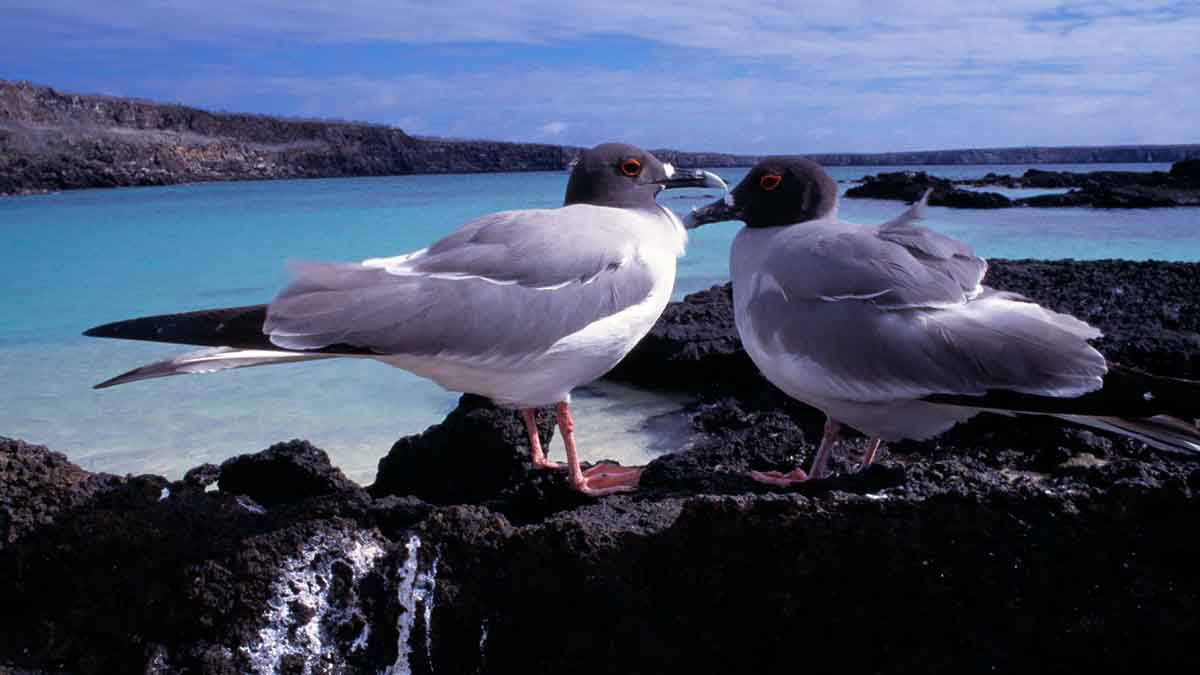
Photo: rick734’s
This bay originated when the crater of this island collapsed below sea level. The wet landing is on a beautiful white coral sandy beach. This island is a favorite destination for birdwatchers, allowing the observation of several species including: red-footed boobies, masked boobies, wandering tattlers, lava gulls, whimbrels, yellow-crowned and black-crowned lava herons, and yellow warblers.
Continuing on the trail, visitors gradually climb to the edge of the cliff, where they can see Red-Foots nesting in the Mangrove trees below. Birdwatching opportunities include sightings of sharp-beaked finches, large cactus and ground finches, Galapagos doves, and swallow-tailed gulls. At the end of the trail, at the cliff’s edge, an incredible view of the island and the many birds living there can be observed.
Breakfast / Lunch / Dinner
Day 4 (Sunday) : South Plazas Island & Santa Fe Island
AM: Plazas, Santa Cruz
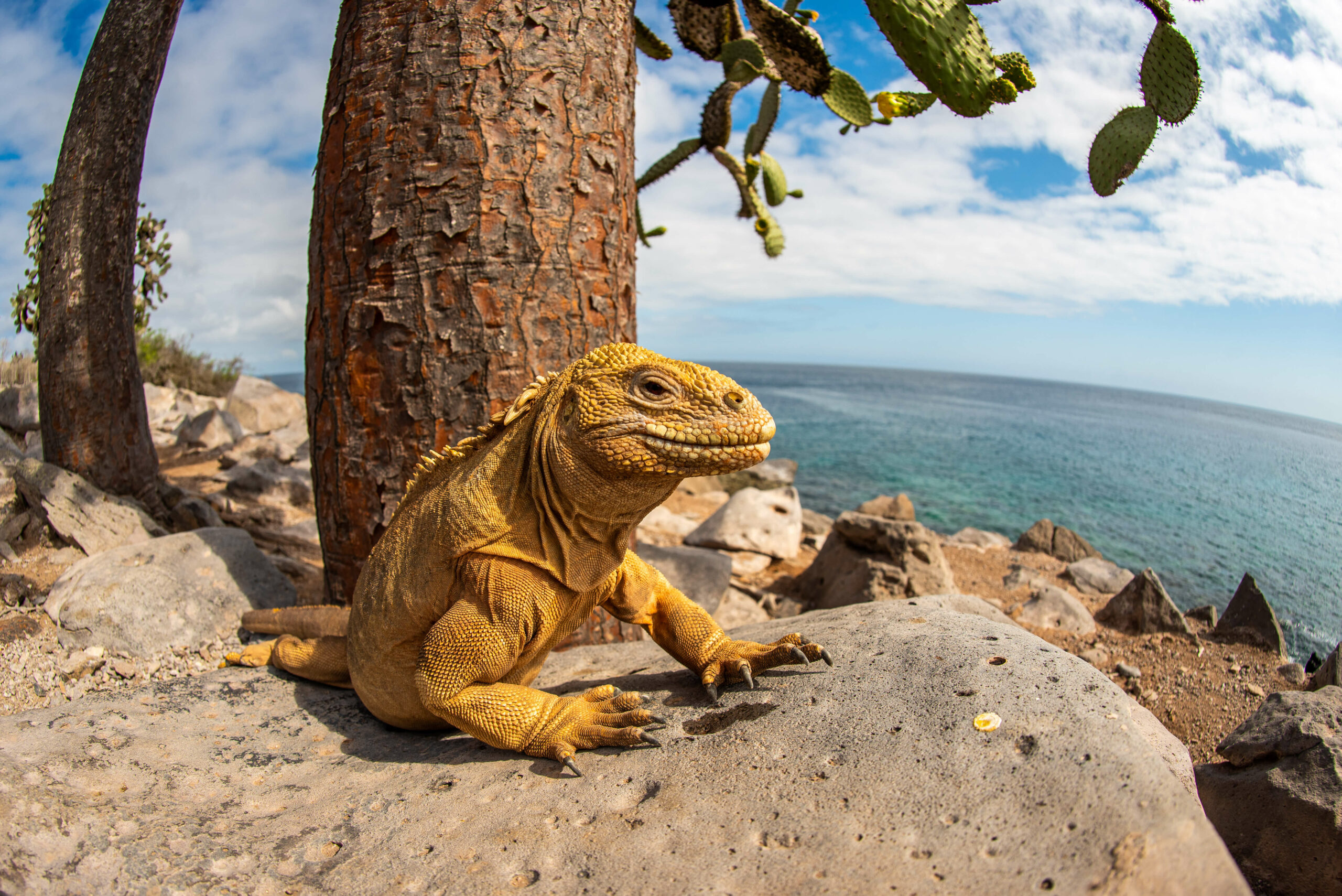
© Latin Trails
Plazas is located to the east of Santa Cruz Island and forms part of two islands known as Islas Plazas. Despite its small size, some of the most interesting and outstanding species of the Galapagos are found here. The Plazas land iguanas are smaller than their relatives found on other islands.
Throughout the island, there are several hybrid iguanas, a result of crossing a male marine iguana and a female land iguana. They are unique, recognisable at first glance by their black/gray colour, with a land iguana’s crest, but face and tail of the marine iguana. The large population of iguanas is due to the presence of tunas, their favourite food. Swallow-tailed gulls nesting in the rugged cliffs are seen along with other seabirds such as Audubon shearwaters, red-billed tropicbirds, frigate birds, and brown pelicans.
PM: Santa Fe
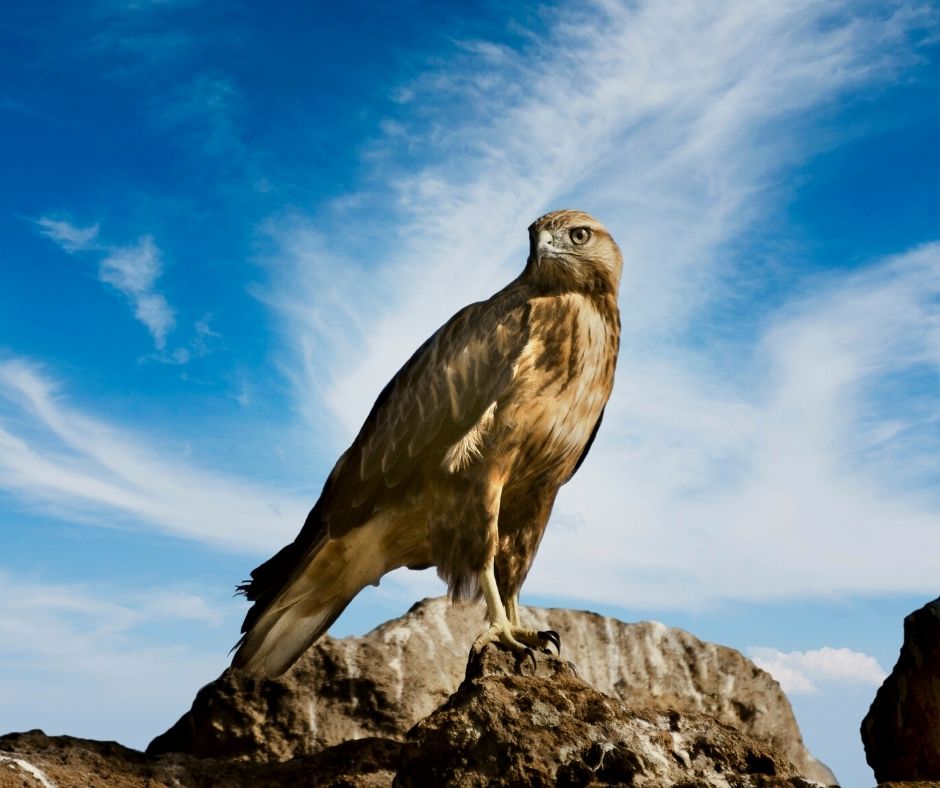
Photo: Bilgehan Tuzcu
Located in the southeastern part of the Galapagos, this island was formed from an uplift instead of a volcanic origin, which is why it is mostly flat. There are some theories which suggest this could be the oldest island in the Archipelago. Santa Fe is home to a number of endemic species like the Galapagos hawk, Galapagos snake, Galapagos mockingbird, rice rats, and one of the two species of land iguanas on the islands.
After disembarking in the beautiful and clear waters, you will be in contact with one of the many sea lion colonies. Along the trail, many salt bushes can be seen as well as giant prickly pear cacti: gigantism is a characteristic of oceanic islands. There are great possibilities for snorkelling with playful sea lions and tropical fish.
Breakfast / Lunch / Dinner
Day 5 (Monday) : David Rodriguez Land Tortoise Breeding Centre & Gianni Arismendy Environmental Interpretation Centre
AM: David Rodriguez Land Tortoise Breeding Centre
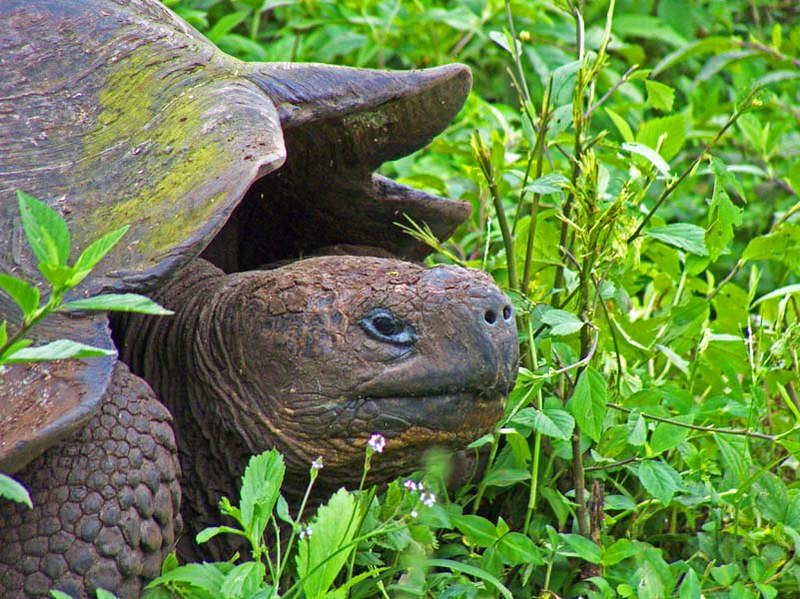
© Latin Trails
In 2002, the Galapagos National Park Service undertook the programme for the breeding and care of tortoises in captivity, establishing for this purpose the Tortoise Breeding Centre at that time with the name of Jacinto Gordillo. In 2016, it changed its name to the Tortoise Breeding Centre with the name of “David Rodriguez,” in recognition of the 39 years of service to the Institution of the park ranger.
The David Rodriguez Tortoise Breeding Centre is located in the southeast of San Cristobal, 22.5 km from Puerto Baquerizo Moreno. Access is by land; the bus trip takes approximately 40 minutes and is located in the vicinity of Cerro Colorado. This breeding centre has been built to improve the population status of giant tortoises, Chelonoides chathamensis of San Cristóbal Island in an environment with conditions similar to their natural state, and in this way, promote the tourist development of San Cristóbal.
PM: Gianni Arismendy Environmental Interpretation Centre
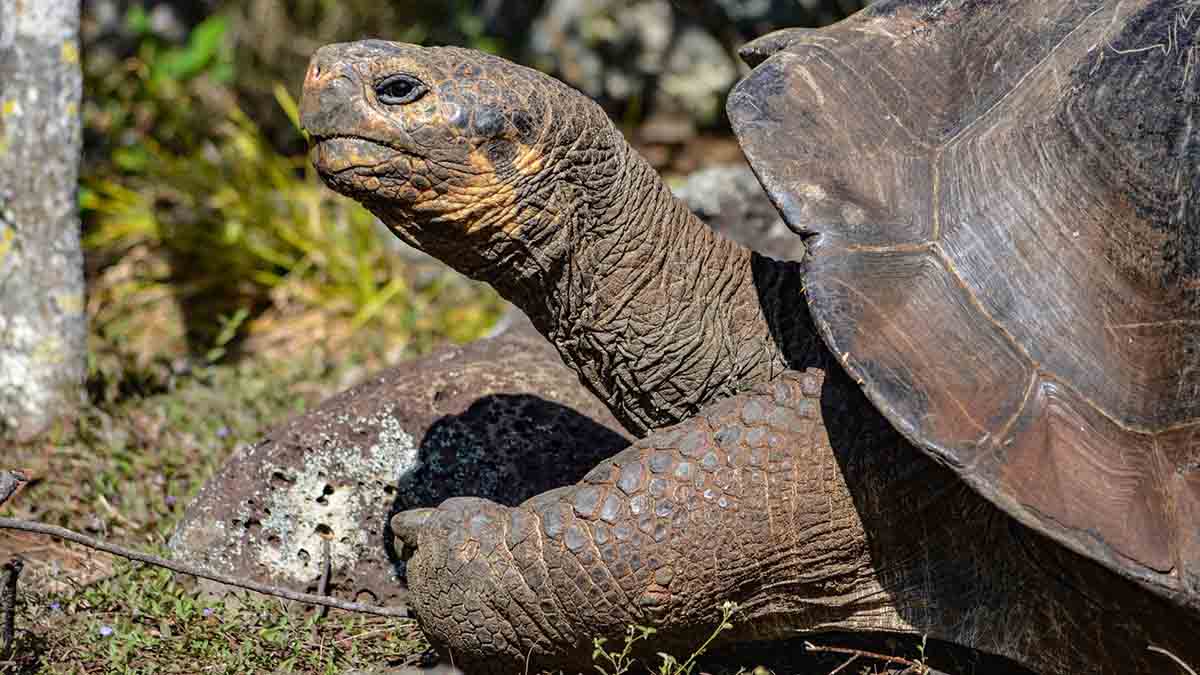
Photo: marktucan
This is an interpretation center with exuberant gardens and stunning ocean views. Visitors at the interpretation center can learn a lot about the geological and human history of the islands, conservation facts and natural history. This is the oldest museum of Natural History in the Galapagos Islands which attempts to preserve the archipelago. It is indeed inspiring and motivating to watch and learn about all of their research and attempts.
Breakfast / Lunch / Dinner
Day 6 (Tuesday) : San Cristobal Island: Galapaguera & Cerro Brujo
AM: San Cristobal Island
Punta Pitt is located at the eastern end of the island of San Cristobal, with a beach of approximately 90 metres and several natural viewpoints overhanging an eroded hill of volcanic tuff.
A 1,400-metre trail leads from the beach called Oliviana to the top of the hill, which is coloured by different types of lava.
The strong winds present on the hill have caused a natural erosion that produces fantastic and memorable landscapes that look like something out of a science fiction movie.
A beautiful olive yellow colour with bright crystals from the erosion of lava and shells paints the sand of Oliviana beach, where sea lions lie in the sun watching the flight of frigate birds, pelicans, herons and seagulls.
Pitt islet is one of the few places where the three species of boobies (blue-footed, red-footed and masked) and the two species of frigate birds can be observed in the same area.
PM: Lobos Island, San Cristobal Island
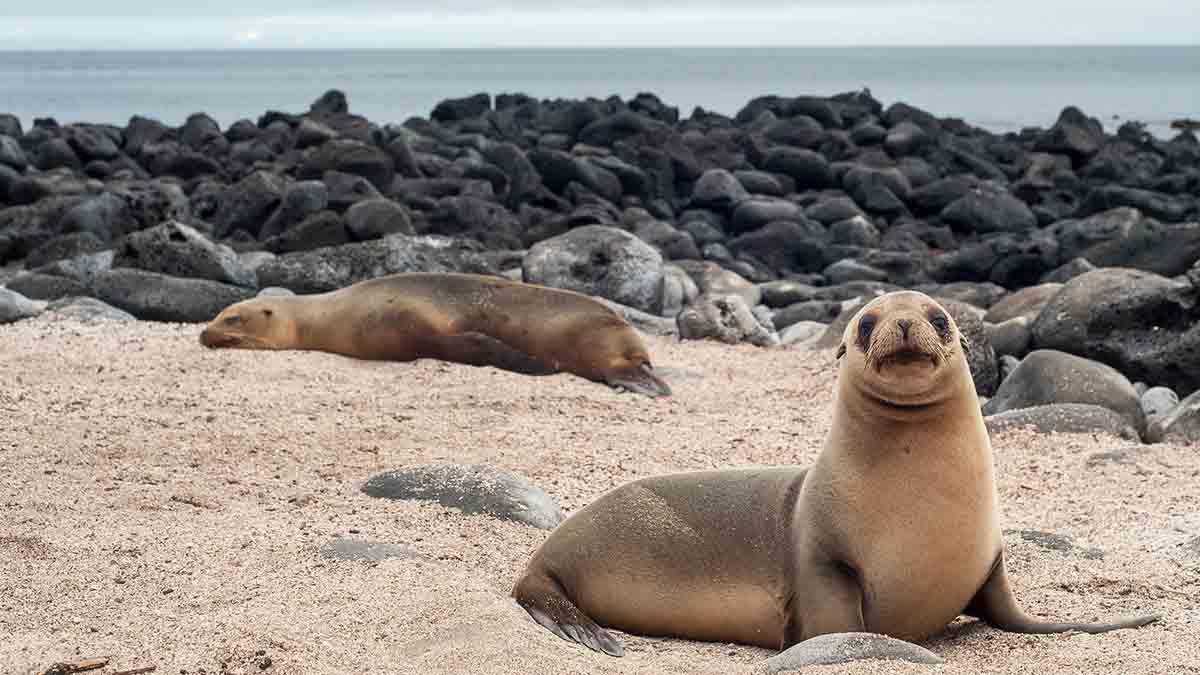
© Latin Trails
Isla Lobos is a small, flat islet. The name Isla Lobos is given to it as it is home to several sea lions, which frolic on the beach; their brown fur stands out against the white sand. Isla Lobos is approximately 20 minutes by boat (10 kilometres) from Puerto Baquerizo Moreno on San Cristobal Island.
Classified as a tourist diving site, it has 2 piers from which tourists can explore the bottom of the ocean accompanied by sea lions.
In its waters, a protected channel offers a fantastic place for snorkelling. An 850-metre long trail runs along the island, connecting the two piers. The estimated time of the walk is one hour, during which you can observe coastal vegetation of saltwater-tolerant plants. Its name is due to the two species of sea lions that inhabit it. The sea lions are related to the California sea lions, while the two-furred sea lions, known as fur seals, have their origins in Antarctica.
Breakfast / Lunch / Dinner
Day 7 (Wednesday) : Española Island: Osborn Islet, Gardner Bay & Suarez Point
AM: Española Island, Gardner Bay
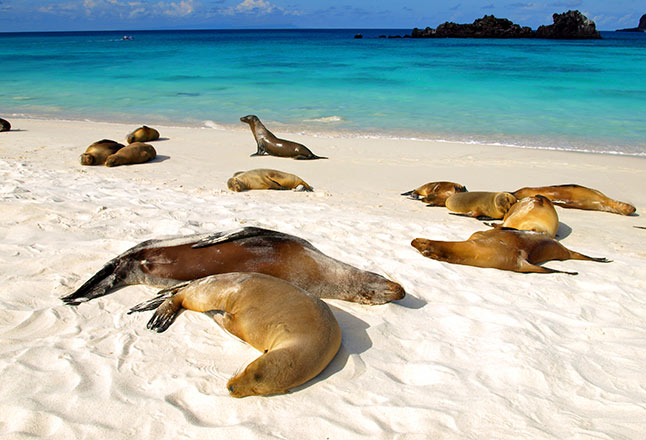
Located on the north-eastern coast of Hood Island, Gardner Bay offers an excellent beach for relaxing, swimming, and even kayaking, along with the opportunity to observe sea lions (Zalophus wollebaki). Here, we can also spot sharks in the crystal-clear ocean waters.
At this location, you can observe three species of Darwin finches:
- A subspecies of the large-billed cactus finch (Geospiza fuliginosa), which resembles the large-billed terrestrial finch;
- The small-beaked ground finch (Geospiza fuliginosa); and
- The singing finch (Certhidea Olivacea), another endemic subspecies.
Both resident and migratory birds can be observed in this area.
PM: Suarez Point
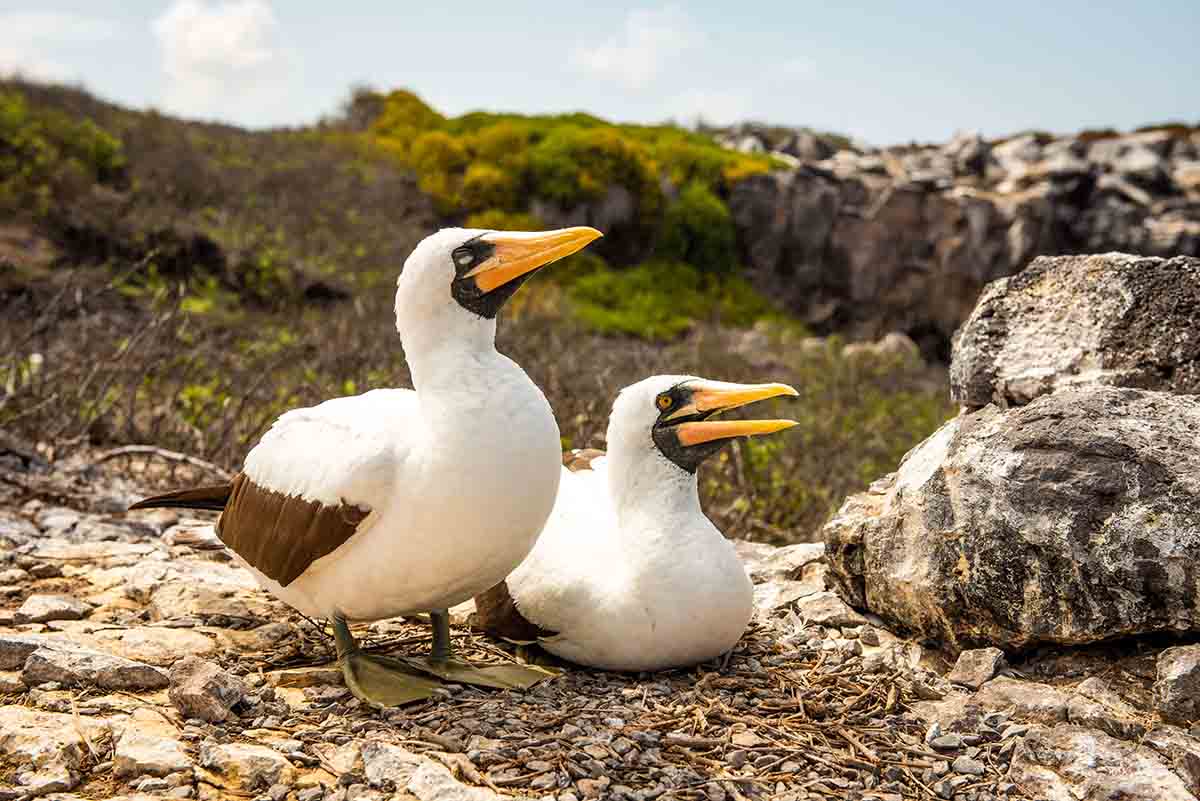
© Latin Trails
This area is excellent for spotting blue-footed boobies, albatrosses, and Nazca boobies. Situated on the oceanfront, it is a beautiful site where the large waved albatrosses use the cliff as a launching pad. The famous attraction here is the magnificent blowhole, which spurts water high into the air, reaching heights of at least 50 to 75 meters. This site offers wonderful photography opportunities.
Breakfast / Lunch / Dinner
Day 8 (Thursday) : Floreana Island: Cormorant Point, Champion Islet, Post Office Bay & Baroness Lookout
AM: Cormorant Point, Champion Islet
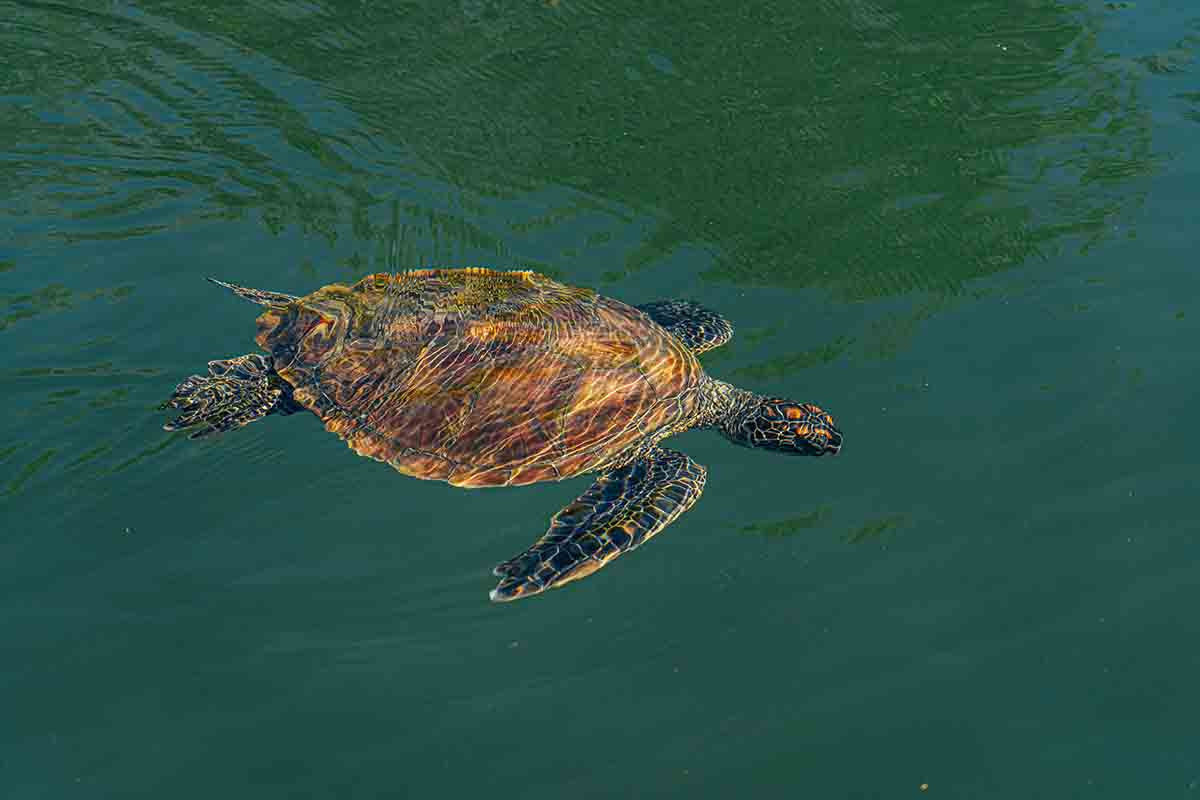
© Latin Trails
This site probably offers the best flamingo lagoon in the Galapagos; it is also one of the largest in the islands. It’s situated between two tuff lava cones that give the area a special atmosphere. There are various species of shorebirds to observe besides flamingos; the most frequent are common stilts, white-cheeked pintail ducks, and other migratory birds. It is very interesting to see the two distinct beaches: “The Green Beach” (due to its high percentage of olivine crystals in the sand) and the “Flour Sand Beach” which is made up of coral.
After the interesting walk, the group is taken to Champion Islet, a great place to enjoy snorkelling and underwater wildlife. Some of the animals that can be seen are sea turtles, sea lions, and multiple fish thanks to the nearby coral reef.
PM: Post Office Bay
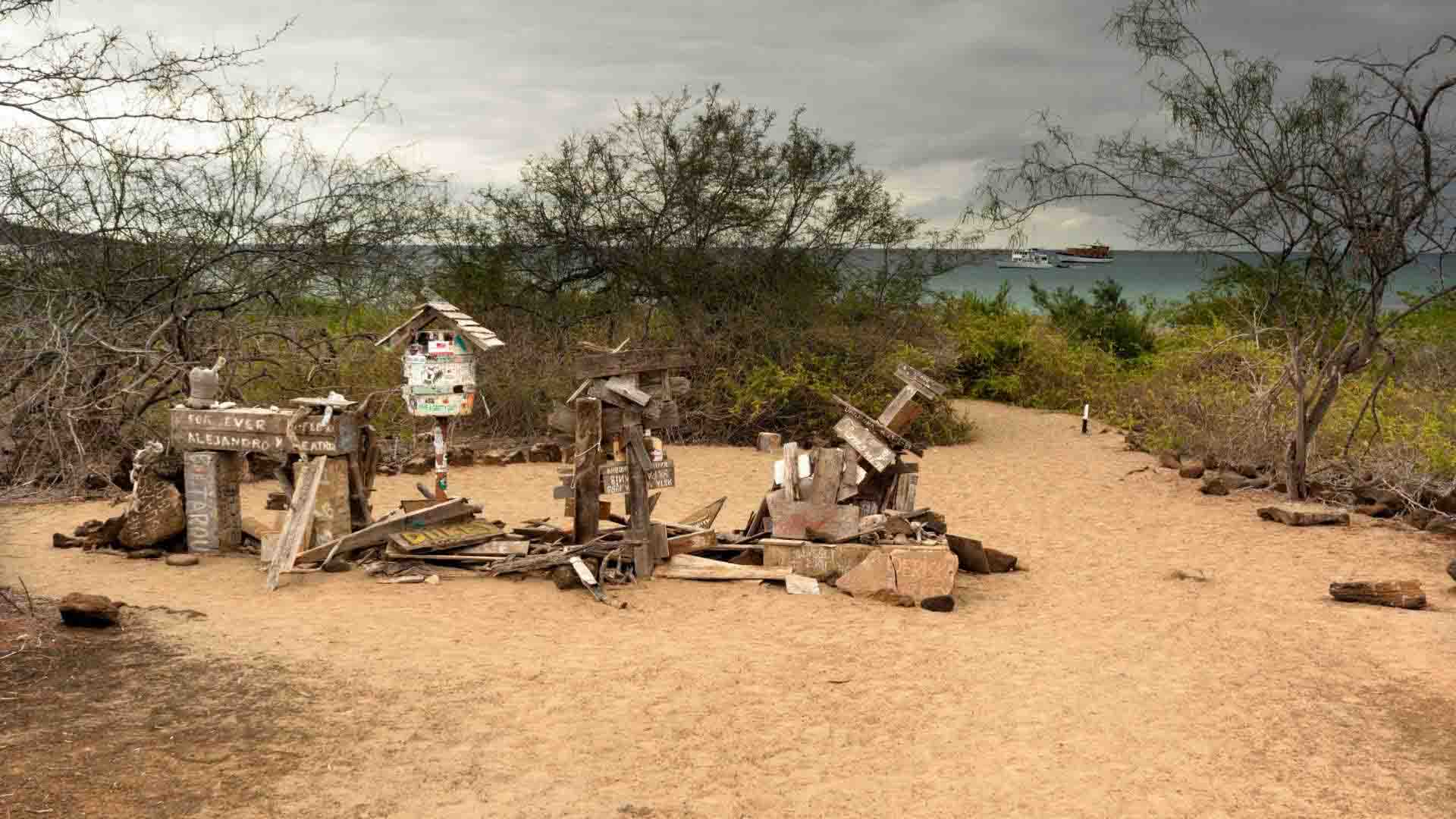
Photo: stockcam
Historically, this site is the location of a wooden barrel that was placed in the 18th century by the crew of a whaling ship. It has been used since this time by mariners and tourists as a post office. The idea is to carry letters or postcards to their destination by hand. Besides, this site was the landing area for some of the first colonists. This day’s afternoon is thought to be a relaxing time for visitors to enjoy the beach and the beauty of Galapagos.
Breakfast / Lunch / Dinner
Day 9 (Friday) : Fausto Llerena Nurturing Centre
AM: Fausto Llerena Breeding Centre
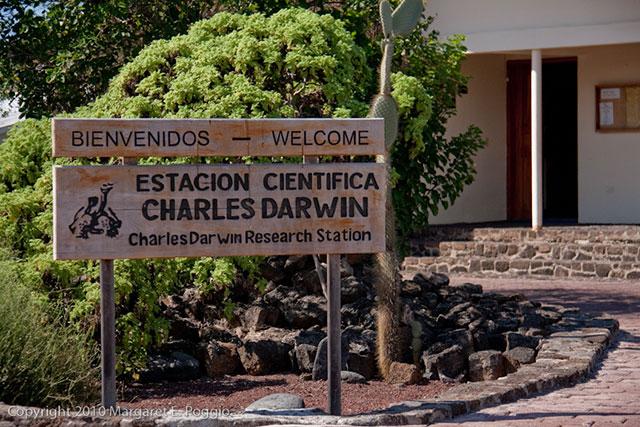
© Latin Trails
The Fausto Llerena Breeding Centre is located in the Galapagos National Park, on Charles Darwin Avenue, at a distance of 1 km from the Gus Angermeyer Tourist Pier. After a 40-minute walk, the attraction is part of the network of visitor sites of the Charles Darwin Foundation.
The visit starts at the information booth of the Galapagos National Park Service (SPNG). The trail leads to the Van Straelen Interpretation Centre, then to the breeding centre. From there, an elevated circular path begins, made of wood, from where you can observe Lonesome George and the tortoises of Española Island. It ends at the tortoise exhibition corral.
After the visit, you will be transferred to the Baltra airport in time for your flight back to the mainland.
















